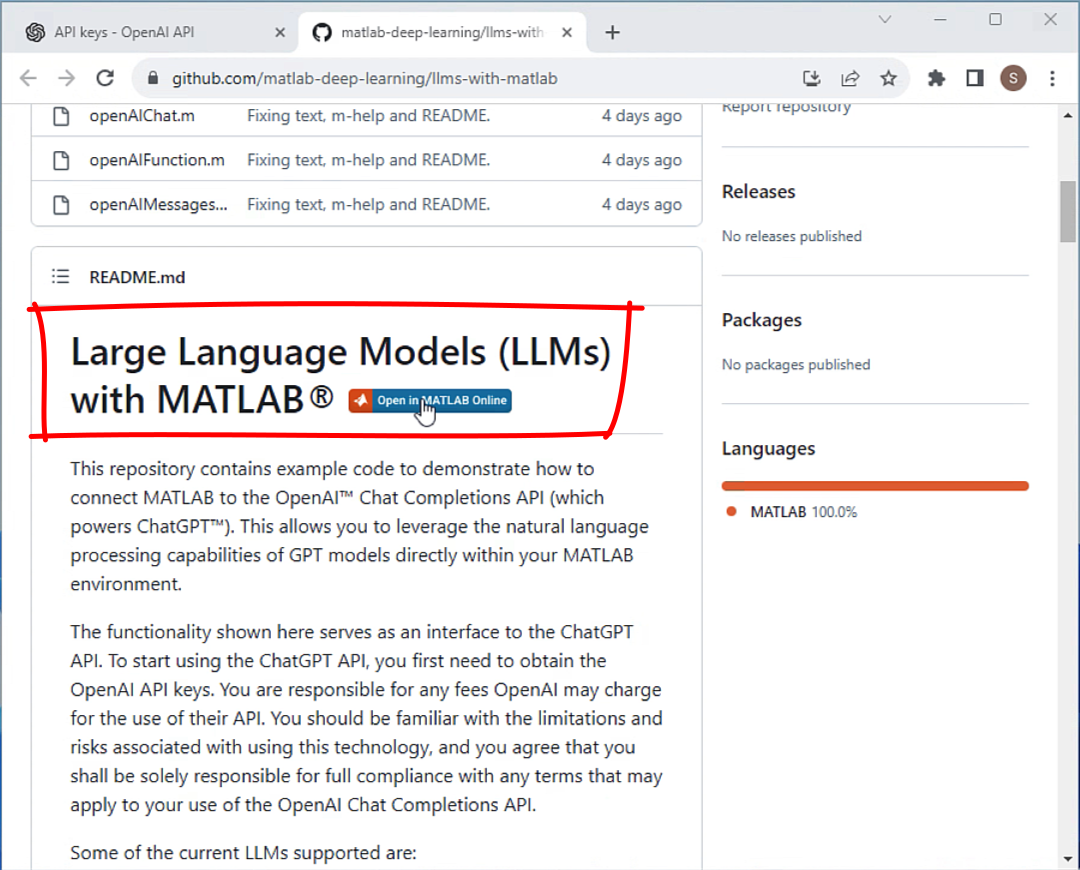
MATLAB Online is a very convenient platform for working with MATLAB and Python® together. And I am not only saying this because I was part of the MATLAB Online product team until fairly recently (ok,... 更多内容 >>

MATLAB Online is a very convenient platform for working with MATLAB and Python® together. And I am not only saying this because I was part of the MATLAB Online product team until fairly recently (ok,... 更多内容 >>

As you might have read from my dear colleague Mike on the MATLAB blog, MATLAB now slots neatly into Google® Colab. Google Colab is a great sandbox for demos, workshops, or quick experiments.... 更多内容 >>

This blog post is from Brenda Zhuang, Software Development Manager, and Jayden Shin, Senior Application Engineer at MathWorks. Ready to pick up a childhood game and play it with a... 更多内容 >>

MATLAB makes it easy to integrate Python®-based AI models into your MATLAB and Simulink workflows. You can call PyTorch® and TensorFlow™ models - or any Python code - directly from MATLAB. For... 更多内容 >>

Today is the last day of 2024. Most of you are busy with non-AI, non-programming, non-thinking-about-work preparations for the new year. Nevertheless, I wanted to wrap up this year by looking back... 更多内容 >>

This blog post is from Maggie Oltarzewski, Product Marketing Engineer at MathWorks. In R2024a, four new blocks for co-executing deep learning models in Simulink were added to Deep Learning... 更多内容 >>

In R2024a, Deep Learning Toolbox Verification Library introduced the d-rise function. D-RISE is an explainability tool that helps you visualize and understand which parts are important for object... 更多内容 >>

When combining MATLAB with Python® to create deep learning workflows, data type conversion between the two frameworks can be time consuming and sometimes perplexing. I 've certainly experimented... 更多内容 >>

In this blog post we are going to show you how to use the newest MATLAB functions to: Import models from TensorFlow and PyTorch into MATLAB Export models from MATLAB to TensorFlow and... 更多内容 >>

How to connect MATLAB to the OpenAI™ API to boost your NLP tasks. Have you heard of ChatGPT™, Generative AI, and large-language models (LLMs)? This is a rhetorical question at this point. But did... 更多内容 >>